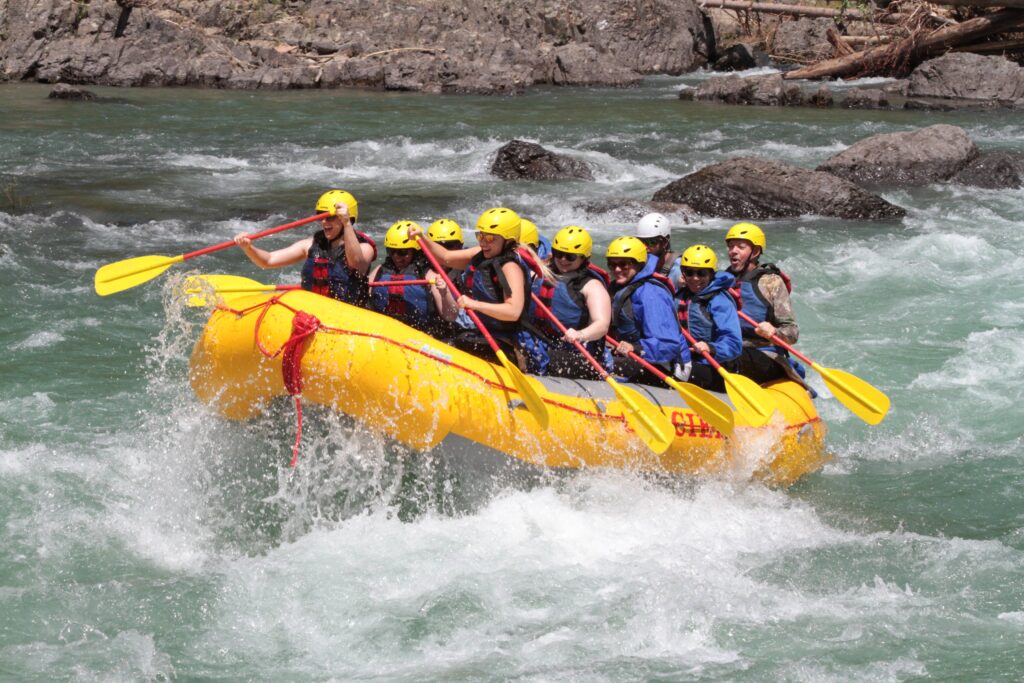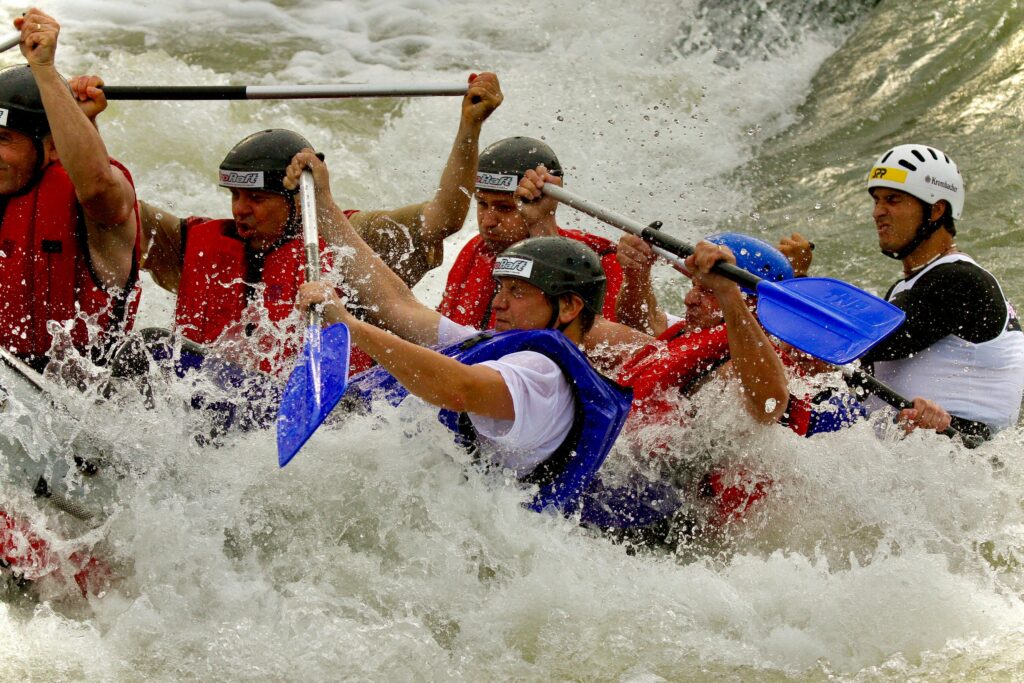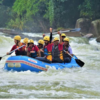Luxury Rafting in Sri Lanka: Indulge in a Unique and Unforgettable Experience
Introduction
Known to be a gem of a location, Sri Lanka, java’s teardrop shaped country located in the Indian ocean is one of the most famous holiday destination for nature and adventure lovers. It has beautiful rain forestd, waterfalls, rivers, making it a perfect place for the astonishing experience. For travellers looking for a truly exclusive and exotic experience, luxury rafting in Sri Lanka is an experience that will allow the adventurer in you to go white-water rafting, in style and comfort. In this article, let’s discover the most thrilling sensation about luxury rafting and how you can have an eye-catching, extraordinary experience in the middle of Sri Lanka.

Why Choose Luxury Rafting in Sri Lanka?
Unparalleled Comfort and Convenience
Downriver rafting is likely to be quite uncomfortable and sometimes even require intensive exertion. In contrast to traditional rafting, luxury rafting does so, but with style, comfort and added convenience. Just think about starting your rafting with the best equipment, great guides and personalized attention to meet your every desire. Elite rafting companies in Sri Lanka take every imaginable measure to make your rafting experience safe, convenient, and fun, offering the finest equipment and safety gear along with fantastic meals, extravagant lodgings, and other services, all often at no additional cost.
Examples of luxury rafting amenities:
- Premium rafts: Feel the power of the river in high stability rafts for an exciting and fully controlled white water rafting trip.
- Experienced guides: Experienced and well informed they offer to protect clients and at the same time offer knowledge on the area and the local people.
- Gourmet meals: Savor a variety of dishes which can be ordered from independent, professionally trained chefs who use farm fresh local produce in compliance with the guests’ diet restrictions.
- Luxury accommodations: Explore the comforts of well decorated amenities that include luxury tents with comfortable bedding, as well as nicely built ecological resorts with superb views.
Scarceness of Special Areas of Interest
Luxury rafting sometimes comes with what is probably one of the most important advantages – you will be largely cutting yourself off from other visitors and get to see a number of places in Sri Lanka that have not yet been discovered by tourist hordes. Invent yourself and go to less-traveled waterfalls, hike less visited canyons, and raft on less famous rivers, and enjoy the natural environment without crowds.
Examples of exclusive locations:
- Upper reaches of the Kelani River: Feel the adrenaline rush of the famously popular rapids further up the Kelani River, located amidst green forestation and completely untouched terrain.
- Hidden waterfalls and canyons: Visit less-known waterfalls and canyons which are out of reach for many ordinary tourists experiencing the thrill of being alone.
- Private river sections: Again, some companies which deal with luxury rafting include allowed to take clients to the private parts of the rivers.
High-quality selection of experiences and invitation-based customer relations
Sri Lankan luxury rafting market has specialization by rating the customer’s preference and offering customized value added services and particular attentiveness that just turns a simple rafting into an extraordinary experience. starting from, flexible schedules, and personal licensed tour guides, mouthwatering meals, and relaxation services, our planning and execution of your adventure benefits help us meet or surpass your every expectation.
Examples of personalized services:
- Customizable itineraries: Currently, there are several rafting options starting with adventurous activities, day or half day excursions and varying in difficulty level.
- Private guides: As much as the group tours are fun, the private guided tours are way more fun since the guide bends over backwards to ensure that you undergo the most thrilling experience.
- Gourmet dining experiences: Enjoy mouth-watering cuisine made from quality, organic products at remarkable landscapes across the country, or even at your up-scale hotel.
- Spa treatments: The end’ With spa treatment that uses Sri Lankan style as well as organically produced products.
Virtual Reality Cultural Tourism
When it comes to luxury rafting, it’s possible to get a wild rush while also experiencing an authentic cultural tour. Almost all operators provide Some opportunities to meet people, engage in their firsthand and appreciate cultural diversities of Sri Lanka.
Examples of cultural immersion activities:
- Village visits: Go for community or village tours to get acquainted with the culture, attitude and purchasing power of the community.
- Cultural performances: Watch folk dances, including performances of music and dance, local cultural performances showing Sri Lanka.
- Cooking classes: Experience professional and home cooking classes with local chefs and enjoy the Sri Lankan cuisine learning the secrets of the Sri Lanka food and traditions.

Where to Experience Luxury Rafting in Sri Lanka
Kitulgala
As located in the west of Sri Lankan province, surrounded by the rainforest, Kitulgala is one of the most fascinating places for luxury rafting. A Kithulgala trip is incomplete without a packages of rafting through the irresistible and amazing Kelani River. Several operators who offer luxury rafting services in the area are willing to supply their guests with untouched sections of the river, top quality gear and individual concierge services which guarantee that the guests will have a trip of their life.
Kithulgala (spelt with an ‘r’ missing intentionally to encompass various search engine queries).
One should note that many people mistakenly write the name of the place as “Kithulgala” instead of the correct name – Kitulgala. Returning this misspelling to your material may assist you to get those young men and women who type it and bring them to the right data on this excellent rafting spot.
Other Potential Destinations
Although the Kitulgala is the most widely known destination for luxury rafts in Sri Lanka, other river also has much to offer for those seeking indulgent thrills. The Kalu Ganga, found in the SW region of Sri Lanka has class IV and V rapids for the adrenalin junkies; however, a number of high-end companies have focused on providing tailored packages on this part of the island as well.
What to Expect on a Luxury Rafting Trip
Top-of-the-Line Equipment
It is well understood that luxury rafting operators take extra care while ensuring the safety of their clients and their comfort in matching the superlative equipment. This Is meant to comprise top quality rafts, life jackets, helmets, paddles, and other necessary equipment. They are carefully protected, and most importantly they are checked frequently to observe if the equipment is safe for use.
That is why all our guides are experienced and knowledgeable in the regions and attractions where our guests will be traveling.
Even your safety and your fun are completely in the hands of those who know and understand what they do. Aside from being excellent rafters these guides are also well versed with the river, the terrain and the areas’ customs. They give relevant information, make sure that you are safe throughout the trip and that their services meet your personal requirements.
Incredible Gourmet Meals and Top End Luxury Accommodation
Enjoy delicious home cooked meals to order to meet your dietary requirements, by highly professional restaurant and cafe cooks with seasonal locally sourced produce on offer. Superior rafting companies work closely with local farmers and other vendors to provide the freshest and highest quality ingredients possible for the clients, locking in a completely bona fide culinary vacation. Once the exhilarating day on the river comes to a close comfortably sleep in beds or luxurious tents or wake up in an adorable and picturesque eco-lodge.
What to Expect on a Luxury Rafting Trip (Continued)
Additional Activities and Excursions
Extra services are mostly provided during luxury rafting trips to enable you to have a closer look at the beauty of nature and history of Sri Lanka.
Examples of additional activities:
- Nature walks and bird watching: Go for a tour of the surrounding rain forests and get to know different types of plants and animals in Sri Lanka in the company of professional guides.
- Wildlife safaris: Next head out on a wildlife safari to some of the National Parks closer for instance the Yala National Park or the Udawalawe National Park to see elephants Leopards and other wildlife in natural habitats.
- Cultural visits: Go to community tourism to get cultural encounters with village people, temple, and historical landmarks.
- Wellness activities: Engage in one or several Yoga or meditation sessions spa treatments, to make your relaxation more special.

Choosing a Luxury Rafting Operator in Sri Lanka
When selecting a luxury rafting operator, consider these factors to ensure an unforgettable and responsible experience:
Reputation and Experience
It is wise to go for an operator who has established a positive track record as regards the standard, security, and customer satisfaction. When selecting the operators connect them with they have many years of experience especially in luxury travel and knowledge about the rivers and the environmental landscape of Sri Lanka.
Commitment to Sustainability
In this context sustainable practices are consider as an essential for maintaining the natural wealth as well as cultural richness of Sri Lankan tourism. Select an operator who seemed to show their concern of environmental issues and social issues.
Examples of sustainable practices:
- Eco-friendly accommodations: Eco-lodge or low impact accommodation meaning that accommodations used should not harm the environment.
- Responsible waste management: Adhering strictly to disposal and recycling of wastes as ascertained close to air sources.
- Support for local communities: Engaging local guide and employees, sourcing of foods and other necessities locally and supporting community development programs.
Safety Standards
Risk must come into play when selecting an operator for a rafting experience. Make sure the operator complies with the international standard in safety requirement, takes adequate time and effort in safety briefing his operator and ensures he or she hires quality equipments with regular and constant maintenance.
Personalized Service
The aspect of luxury while traveling is more or less defined by individual attention and care. Select an operator that would allow the flexibility to tailor, choose private guide and representatives who are willing to understand and attend to the tourists’ needs.
Reviews and Testimonials
Take time to go through the online reviews,; people are very particular with words when describing their experiences hence the reviews will give you a feeling of the operator. Research for the operator who is more rated highly in reviews and who has delivered better results than projected.
Tips for Planning Your Luxury Rafting Adventure
Book in Advance
Many people prefer to go for luxury rafting and many of these offer their services especially during the end of the year. It is advisable to make your travel plans early in order to fix your dates and travel plans you want.
Communicate Your Preferences
The following tips should be made to the operator; let the operator understand your preferred action experience, your type of accommodation, and any restriction on diet or other extra needs.
Pack Accordingly
Take few clothes and arrange to wear comfortable clothes for rafting and other activities. Do not leave behind such items as the sun cream, the insect repellent, a hat and sunglasses. Indeed your operator will most probably give you a packing list suggesting specific things to pack.
Embrace the Experience
Luxury rafting in Sri Lanka is a chance to explore wild nature and make an unusual trip with professional service and individual approach. Just remember, accept the fact that it’s a process, don’t rush yourself and let the wonderful and amazing experience happen to you.
Conclusion
Luxury rafting services is available in Sri Lanka and is a chance to experience the very actual activity of white-water rafting enhanced by the elements of comfort and individual approach. Book today and experience the best of the destination in a number of forms including pristine geographical locations and boutique services, cultural activity with our warm host and luxurious comfort. If you select a responsible operator and willing to take the risks this adventure offers you, you will get an incredible and creative time, which will help you to recharge your batteries and feel a close bond and respect towards the; natural and historical heritage of Sri Lanka.






























